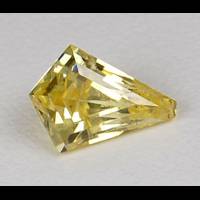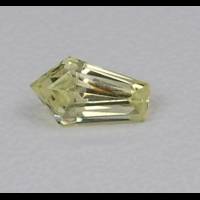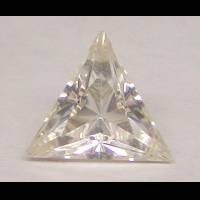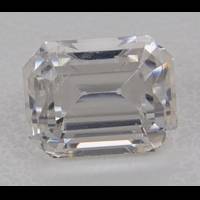Anglesite

Tsumeb, Oshikoto Region, Namibia
9.13 carats
© Rarestone.com
Anglesite forms transparent colourless crystals, often with yellow, green or blue shades. Anglesite is cut into attractive faceted stones, but it is brittle and sensitive to heat.
Fine crystals are found at various places in the USA, in the Leadhills district, Scotland and the best cuttable material comes from the Touissit mine, Oujda, Morocco.
Anglesite Gemstones by Colour
This table shows the variety of hues this gemstone can be found in. Click on a photo for more information.
Anglesite Gemstones by Size
This table shows distribution of Anglesite gemstone sizes that are listed on this site. This can give a good indication as to the general availability of this gemstone in different sizes.
Contributed photos
Lightest:0.93 cts
Heaviest:51.33 cts
Average:9.74 cts
Total photos:10
Do you have a larger Anglesite? Why not upload a photo?
| General Information | ||||||||||||||
|---|---|---|---|---|---|---|---|---|---|---|---|---|---|---|
| Chemical Formula |
| |||||||||||||
| Physical Properties of Anglesite | ||||||||||||||
| Mohs Hardness | 3 to 3.5, Gemstones of the world (2001) More from other references | |||||||||||||
| Specific Gravity | 6.30 to 6.39, Blue Chart Gem Identification (2010) More from other references | |||||||||||||
| Tenacity | Brittle, Blue Chart Gem Identification (2010) | |||||||||||||
| Cleavage Quality | Distinct, Gemmological Tables (2004) More from other references | |||||||||||||
| Fracture | Conchoidal, Gemstones (2009) | |||||||||||||
| Heat Sensitivity | Sensitive, Gemstones (2009) | |||||||||||||
| Optical Properties of Anglesite | ||||||||||||||
| Refractive Index | 1.877 to 1.894, Blue Chart Gem Identification (2010) More from other references | |||||||||||||
| Optical Character | Biaxial/+, Blue Chart Gem Identification (2010) More from other references | |||||||||||||
| Birefringence | 0.017, Blue Chart Gem Identification (2010) More from other references | |||||||||||||
| Pleochroism | Nil, Gemstones (2009) | |||||||||||||
| Dispersion | 0.044, Gemstones (2009) | |||||||||||||
| Colour | ||||||||||||||
| Colour (General) | Colourless, yellow, greenish, brownish, white., Gemstones of the world (2001) More from other references | |||||||||||||
| Transparency | Transparent,Translucent, Gemmological Tables (2004) More from other references | |||||||||||||
| Lustre | Adamantine,Vitreous,Resinous, Gems, Sixth edition (2006) More from other references | |||||||||||||
| Fluorescence & other light emissions | ||||||||||||||
| Fluorescence (Short Wave UV) | Weak yellow, Blue Chart Gem Identification (2010) More from other references | |||||||||||||
| Crystallography of Anglesite | ||||||||||||||
| Crystal System | Orthorhombic, Blue Chart Gem Identification (2010) More from other references | |||||||||||||
| Habit | Tabular, Gemstones (2009) | |||||||||||||
| Geological Environment | ||||||||||||||
| Where found: | Occurs in the oxidized zone of lead deposits., Gemstones (2009) | |||||||||||||
| Further Information | ||||||||||||||
| Mineral information: | Anglesite information at mindat.org | |||||||||||||
| Significant Gem Localities | ||||||||||||||
| ||||||||||||||









